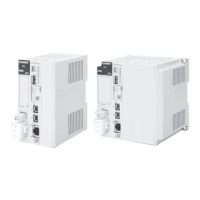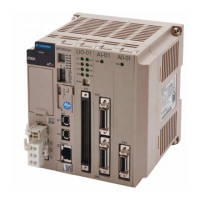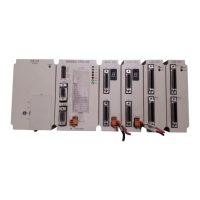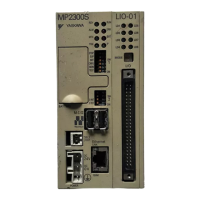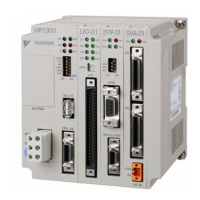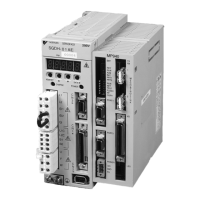4.1 User Program Types and Execution Timing
4.1.3 Sequence Programs
4-25
Specifying Sequence Programs
Sequence programs must be specified directly. Indirect designations cannot be used.
Specify the program number of the sequence program to execute (SPM).
Work Registers
Work registers are used to monitor sequence programs.
The work registers have Status Flags inside the M-EXECUTOR control registers, in the same
way as motion programs that are registered in the M-EXECUTOR.
Sequence Program Status Flags
The Sequence Program Status Flags give the execution condition of the sequence program.
The following table describes the meanings of the Status Flags.
Bit No. Status
0 Program is being executed.
1 Reserved for system.
2 Reserved for system.
3 Reserved for system.
4 Reserved for system.
5 Reserved for system.
6 Reserved for system.
7 Reserved for system.
8 There is a program alarm.
9 Execution is stopped at a breakpoint.
A Reserved for system.
B The program is in Debug Mode (EWS debugging).
C Program Type, 1: Sequence program
D Start Request History
E Reserved for system.
F Reserved for system.
Sequence Program Alarms
If an error is detected when a sequence subprogram is called with an SSEE instruction, bit 8
(Program Alarm) turns ON. When the error is removed, this bit turns OFF.
The following errors can occur.
• The called program is not registered.
• The called program is not a sequence program.
• The called program is not a subprogram (a main program was called).
• Called Program Number Limit Exceeded Error
• Too Many Nesting Levels Error
SPM001
IF MW000<32767;
MW000=MW000+1;
ELSE;
MW000;
IEND;
M-EXECUTOR Program Execution Denitions
Sequence Program
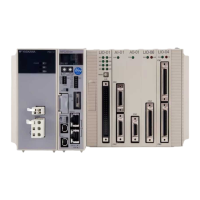
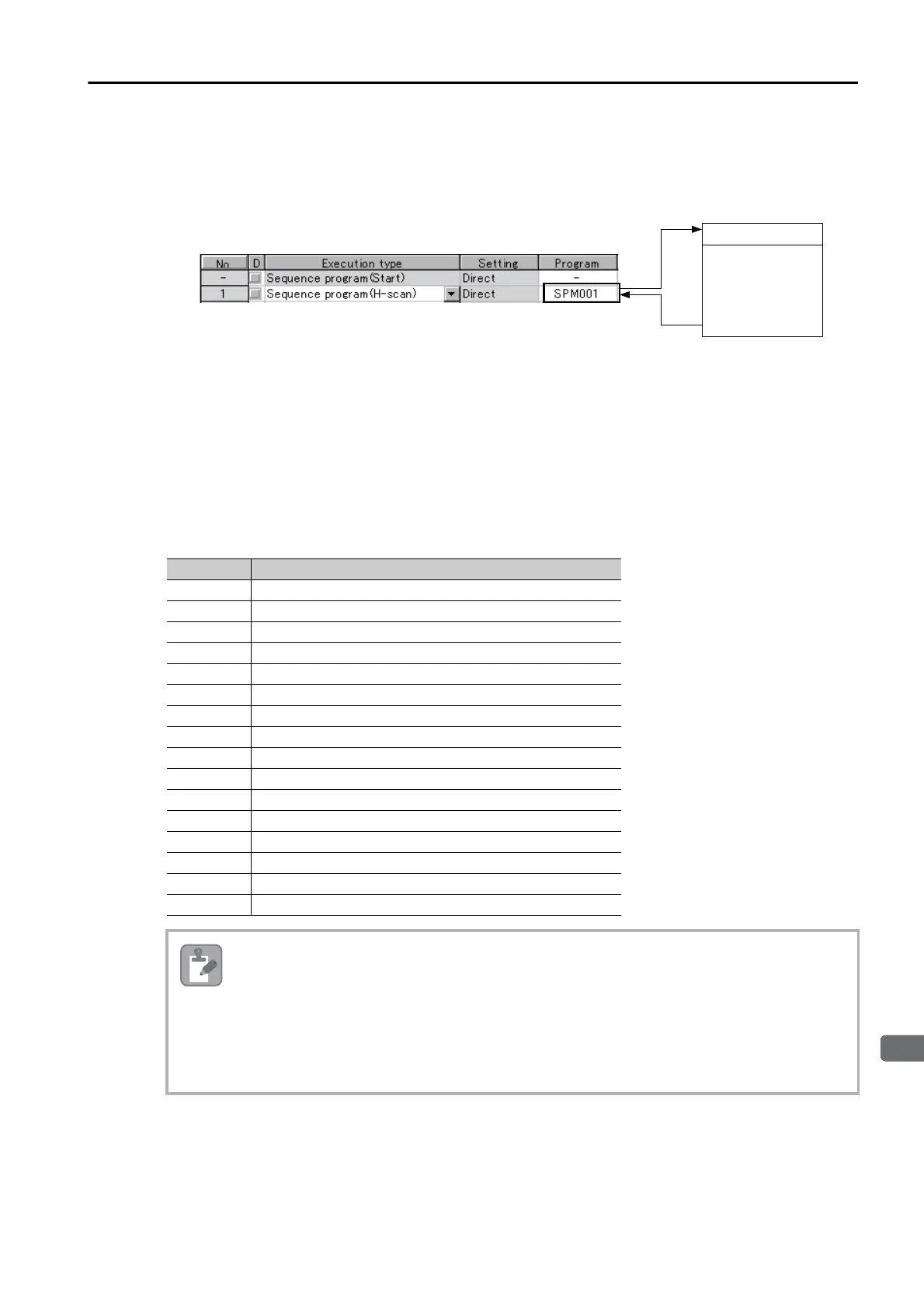